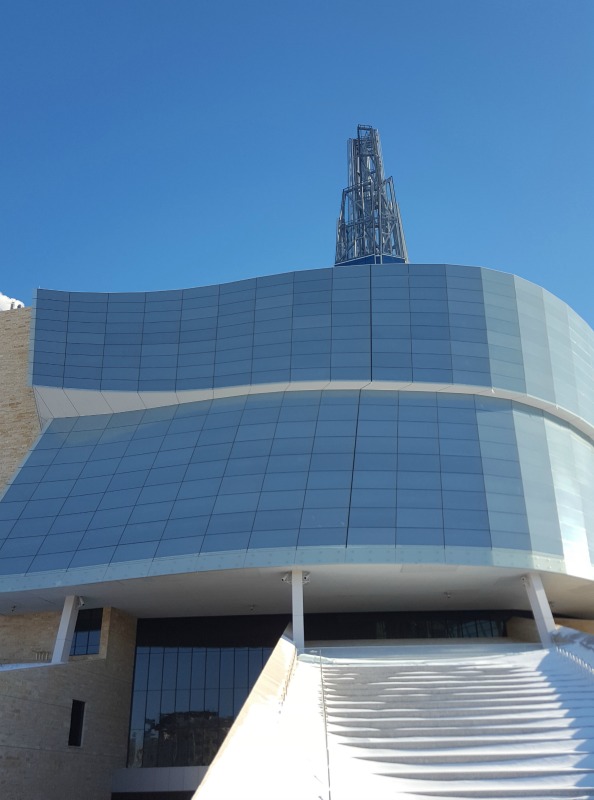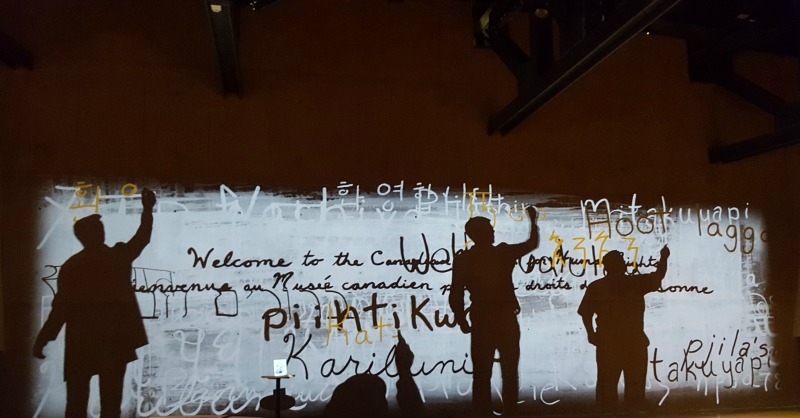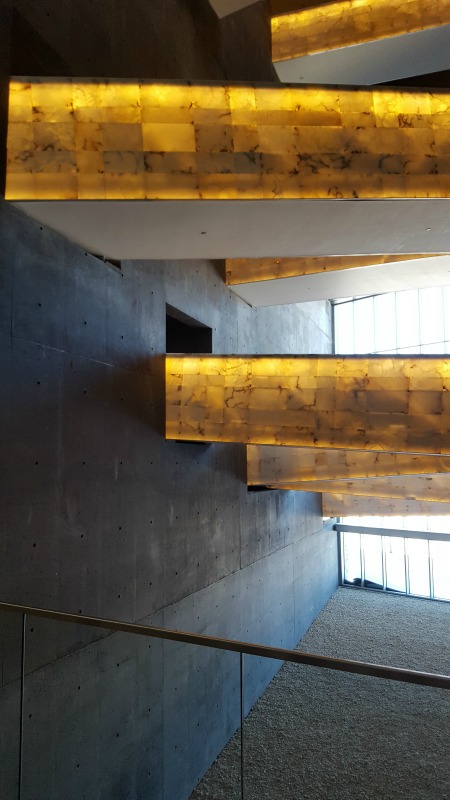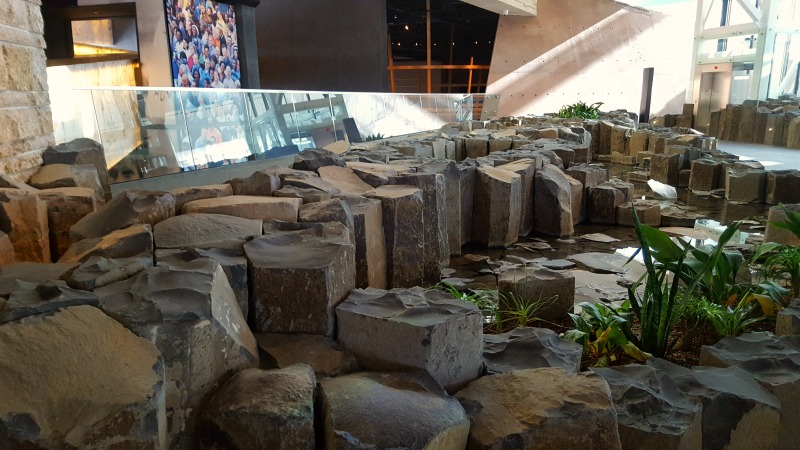Take some time for quiet reflection when you visit the Canadian Museum for Human Rights in Winnipeg, Manitoba.
This article has been brought to you by InterContinental Hotel Group (IHG®), one of the world’s leading hotel companies. Present in nearly 100 countries, IHG® Rewards Club is the largest loyalty program in the industry, with over 100 million enrolled members globally. IHG has more than 5,000 hotels across the globe, offering guests comfort, quality, and a home away from home.

The tall Tower of Hope of the Canadian Museum for Human Rights stands as a beacon for the whole country; the Winnipeg location chosen not only for the place it holds in the hearts of the Asper family (major contributors to the project) but also for the central East-West location in the Canadian landscape. credit J. Mallia
From the top of the Canadian Museum for Human Rights, the Israel Asper Tower of Hope juts out from the flat land surrounding it, starkly asserting itself into the prairie landscape. From many places in Winnipeg, you can orient yourself by locating the tower which is visible for many kilometres in every direction. Several times during a visit to Winnipeg, I found myself searching for the landmark as a way to get my bearings.
The architecture inside the Canadian Museum for Human Rights is a path, starting from the solid concrete base of the museum meant to evoke the strong roots of a tree. From subterranean darkness, the path follows through 11 galleries then rises high up to the light in the Tower of Hope.

The Hall of Welcome lays within the dark base of the Canadian Museum for Human Rights in Winnipeg. It is a stark contrast to the bright sunlight in the Tower of Hope many stories above. credit J. Mallia
The architecture is a metaphor, but also designed to be completely accessible: to all cultures, gender identities, ages, and levels of mobility. To that end, the galleries are all connected by ramps, the tower accessed via glass elevator. It is one of the only places you will find stairs; for those brave and undeterred by heights, a winding staircase will take you to the top.
The galleries hold heavy things. They hold the shame of history and the failings of humanity to protect those who needed protection. It would be a hard heart that moved through the museum without tears. Despite the often depressing subject matter, they have worked very hard to balance the darkness with hope, to keep it from feeling completely overwhelming.
Families with children are very welcome. On Sundays there are special activities for all ages, but if your visit falls on another day, their website has suggestions on how to make your visit age appropriate. A visit with kids will be very different than a visit without kids, and if you are able to spend time reading and reflecting alone or in adult company, you will be glad you did.

The ramps leading to and from the galleries are made with Spanish alabaster, purported to have healing, calming properties. credit J. Mallia
From the outset it was realized that those who visited the museum would need quiet spaces to reflect and recover. The ramps that run from one gallery to the next are clad in Spanish alabaster, a stone reputed to have healing properties. It is warm and translucent, in centuries past it was used to make apothecary cabinets and window panes in Mediterranean monasteries.
Our guide suggested we might find it comforting to run our hands over the smooth surface. I was skeptical, but nonetheless found myself holding the side of the ramp, enjoying the feel of the stone warming beneath my palms, happy to be distracted by something beautiful.

The Stuart Clark Garden of Contemplation is a peaceful spot to reflect on the things you have learned and realized during your visit. credit J. Mallia
In addition to the bright sun in the tower and the soft warmth of the alabaster, another spot for quiet time is the Stuart Clark Garden of Contemplation. The 4,400 square foot area at the base of the tower is filled with natural light, the benches along the gentle reflecting pools perfect for reflecting, its fountains a suitable soundtrack for thinking.
The Canadian Museum for Human Rights in Winnipeg is studiously not a memorial museum. It doesn’t spend time wringing hands and mourning things from the past we cannot change. Instead it strives to explore the genocides and the crushing of light that have happened and continue to happen. Changes in laws, paradigm shifts in popular thought, champions for human rights are celebrated.
There is hope.
There is the encouragement to know better and to do better.
The perfect base of operations for a visit to the impressive Canadian Human Rights Museum in Winnipeg is the centrally located Holiday Inn Hotel & Suites Winnipeg Downtown. Its restaurants and indoor pool and hot tub are a great spot to unwind and reflect after a tour of the Canadian Museum for Human Rights.




